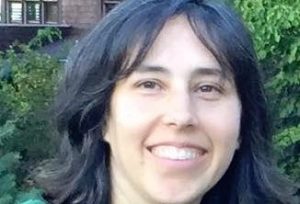The Whole Child and Whole School: A Trauma Informed Approach

By Lori Grassgreen, Director of Alaska Initiative for Community Engagement
Signs of post-traumatic stress in children and adolescents tend to vary based on age, development, and other factors. Some common red flags include:
- Difficulty forming relationships with adults, including teachers
- Difficulty with self-regulation
- Challenges with concentration and attention
- Hypervigilance (startling easily and being overly jumpy)
- Elevated stress levels when facing new challenges or having little control in a situation.
- Somatic symptoms (headaches and stomachaches)
Local wisdom, current research, and educational practice indicate that trauma is a significant barrier for students to come to school ready and able to learn. Promoting social and emotional health and creating culturally responsive trauma-informed learning can provide all children they need to achieve goals and their full potential.
School boards and school districts both nationally and across Alaska have been changing the way they think about both learning and school environments to more fully support the needs of the whole student.
Approximately 125 experienced boardroom member and school board members came together during the Association of Alaska School Board’s pre-conference to explore how to best support the whole child within Alaska schools. This was a rich discussion of school districts and community members already immersed in whole student work and those that are just getting started.
Andrea Sanders, Policy Director of the First Alaskans Institute, and Lori Grassgreen, Director of the Initiative for Community Engagement with the Association of Alaska School Boards set the tone in the morning. The dialogue provided an opportunity to think about the work and the rationale for dedicating our energy to trauma-informed and whole school social and emotional learning. Andrea brought voices of all of the school board members into the room and generated a dialogue about the current context of Alaska.
Andrea Sanders of First Alaskans Institute facilitates a dialog on education in Alaska.
The rich conversation that resulted from our school board members raised key issues facing Alaska schools. These include the intergenerational and interfamily trauma experienced by many of our students, the school and community disconnect, the inconsistent supports for students social and emotional learning, the lack of understanding around history and trauma, and the limited resources and time to dedicate to understanding and support of students whole selves.
Josh Arvidson, of Anchorage Child Trauma Center, shared the research on trauma and Heather Coulehan of the Association of Alaska School Boards shared the education science that illustrates how trauma impacts learners brains and which strategies can be helpful to build skills for students and school staff
Josh Arvidson, Anchorage Child Trauma Center, discusses the neuroscience of trauma and the brain.
Watch Josh Arvidson’s presentation to the Anchorage School District.
Heather Coulehan’s slideshow on the Education Science of Social and Emotional learning.
Several school district staff and statewide organizations shared on their trauma-informed work. While there were many different approaches there were some themes that are highlighted in the video clips below.
Anchorage School District staff, Marcus Wilson shared how he thought that the co-creation process was at the center of their success at Northstar Elementary in Anchorage School District.
Sitka School District staff Mandy Evans and Bering Strait School District Staff Sarah Swanson spoke passionately about the work of co-creation of approaches in the district including curricula adaptations for culturally responsive social and emotional standards together.
Thomas Azzarella from the Alaska Afterschool Network underscored the power of understanding our own social and emotional competencies as adults and the success of modeling skills and practices within school and out of school settings.
Pat Sidmore from the Alaska Mental Health Board and Alaska Board on Alcohol and Drug Abuse discusses the CLEAR model used in Lincoln High School and the tools provided for professional learning and reflective teaching practices.
Lori Grassgreen and Pat Sidmore shared information about statewide efforts to support trauma-informed work. This includes the prioritizing of trauma-informed schools with the State Board of Education’s Alaska Education Challenge.
Lori and Pat also shared information about a workgroup convened by the Association of Alaska School Boards and other partners including State of Alaska Department of Education and Early Development, the Alaska Mental Health Board and Board on Alcohol and Drug Abuse; Anchorage Child Trauma Center; Alaska Afterschool Network, First Alaskans Institute, and the State of Alaska Council on Domestic Violence and Sexual Assault. This group is developing a tool for schools and districts interested in looking at the core components and processes to support trauma-informed schools. School Board members got a first glimpse of the components of this toolkit and provided feedback and insight into how to move forward whole school approaches including strengthening relationships, supportive school environments, skill building for self-regulation, and nine other core components.
For more information contact Lori Grassgreen, Director Initiative for Community Engagement.
# # #




